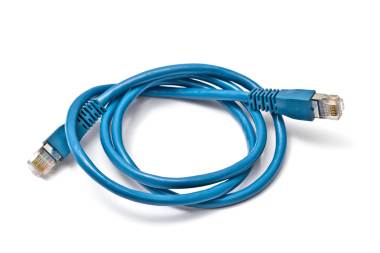We perform annually countless number of works related to the installation and modernization of structured cabling and we have noticed that the most popular classes of twisted pair cables in Poland are Cat. 5e, 6 or 6A. This article will bring up the topic of structured cabling typology and its characteristics in terms of choosing the right type of cable by the Investors.
Selection of structured cabling category
Why do the Investors even consider choosing cables Category, which is more expensive than the other? One of the reasons may be related to the better parameters of data transmission in cables which are more expensive. The network built on the base of Category 6A structured cabling is capable to bandwidth the frequencies up to 500 MHz (bandwidth) and up to 10 Gigabit per second (assuming that all the other elements of networks are not of the lower class than the cabling itself). However the single segments of the Category 6A cabling are still limited to a maximum distance of 90 meters (same as in the lower Categories). The explanation for the selection of the other Categories may be simply that usually the performance requirements are lower and using Category 6 or 5e is enough for the Investors.
UTP, FTP, STP – terminology of structured cabling
Another issue for the Investors after choosing Category is related to the selection of the type of network cable. The main classification of the cabling in these terms divides them into: shielded and unshielded. Moreover in the case of the shielded cables one pair inside (or all pairs) may be surrounded by additional jacket which decreases disruptions. It is important to consider two types of the shield – first is special aluminum foil while the second is a screen made of braided copper. Foil may surround single pairs as well as all the pairs at the same time. Copper screen on the other hand always surrounds all of the pairs together. In this way the producers have created diversity of the cables for the end-users – depending on the expectations. Below, we present a list of the most common cable constructions proposed by the manufacturers with their brief descriptions:
- U/UTP (UTP) – This is the most popular type of the copper cable. It does not have any screen not foil. If there is UTP symbol in the design then it is most certainly this cable
- F/UTP (FTP) – This cable has an overall foil shield, but every twister pair is unscreened. It is often described in the designs as FTP cable.
- S/UTP (STP) - It is a cable which has an overall braided copper screen. In many designs it will be descripted as STP. (but make sure to check it with the project manager, because designer sometimes use STP as the description of other types of cable)
- S/FTP – This type of IT cable has the best screening compared to the other types mentioned here. It has an overall braid screen and foil on each individual twisted pair. It provides best results during the tests performed after implementation – those results are especially fine during Alien Crosstalk test.
- U/FTP – This is a cable which only has foil screened on the each twisted pair.
- F/FTP - This is a cable which has overall foil and foil screened on the each twisted pair.
Which type of the cable you should choose?
First of all, Investor should decide if his structured cabling really needs to be screened at all. From our experience we can assure that UTP cables does not necessarily perform worse that FTP or STP cabling. The most important thing is the end-customer satisfaction. Screened cables are usually used when there are other devices producing electromagnetic fields nearby. We would recommend implementing screened structured cabling in production halls, factories or in the outside environment. In case of the offices however an ordinary UTP cabling is sufficient. The crucial factor in final choice of the type of structured cabling is the price. Here UTP cabling also has an advantage over shielded cabling – it is cheaper in two dimensions (first – fewer materials in production make it cheaper, second – labour during the implementation is cheaper because of fewer elements to patch).

